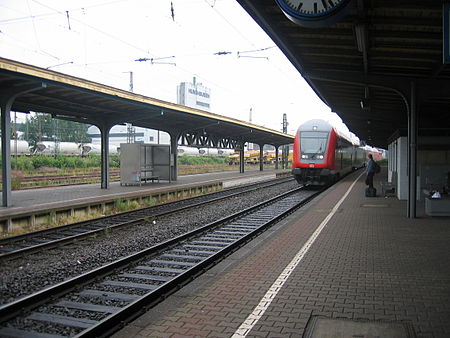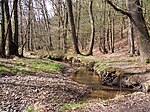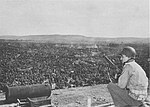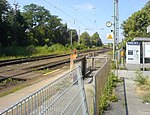Schwerte (Ruhr) station

Schwerte station is a through station in the town of Schwerte in the German state of North Rhine-Westphalia. The station was opened with the section of the Hagen–Hamm railway between Hagen and Holzwickede, opened by the Bergisch-Märkische Railway Company (German: Bergisch-Märkische Eisenbahn-Gesellschaft, BME) on 1 April 1867. It has six platform tracks and it is classified by Deutsche Bahn as a category 4 station.The station is served by the Rhein-Münsterland-Express (RE 7) between Krefeld and Rheine, the Maas-Wupper-Express (RE 13) between Venlo and Hamm, the Sauerland-Express (RE 17) between Hagen and Warburg or Kassel-Wilhelmshöhe and the Ardey-Bahn (RB 53) between Dortmund and Iserlohn, each hourly.
Excerpt from the Wikipedia article Schwerte (Ruhr) station (License: CC BY-SA 3.0, Authors, Images).Schwerte (Ruhr) station
Holzener Weg,
Geographical coordinates (GPS) Address Nearby Places Show on map
Geographical coordinates (GPS)
| Latitude | Longitude |
|---|---|
| N 51.44158 ° | E 7.558663 ° |
Address
Schwerte (Ruhr)
Holzener Weg
58239 , Holzen-Rosen
North Rhine-Westphalia, Germany
Open on Google Maps








